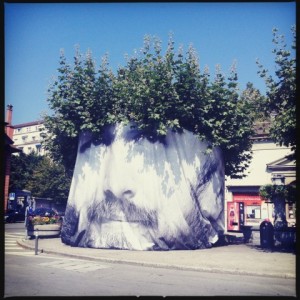Exploring Nature through Images
Swedish photographer Lena Granefelt, in her most recent exhibition NATURA OBSCURA (October 4, 2025 – January 17, 2026) at Passagen in Linköping, presents a compelling fusion of art and science, inviting viewers to explore the hidden layers of nature through photography. The three interwoven projects –Flora Supersum, A Linnaean Collection, and Kompost –Metamorfos—investigate the delicate interplay between life, decomposition, and transformation.
In Flora Supersum, the artist captures plant life at its most vulnerable stages, revealing the quiet beauty in decline. Each image encourages contemplation, suggesting that endings are not merely closures, but openings to new forms and possibilities. A Linnaean Collection reflects on humanity’s long history of cataloguing and classifying the natural world, prompting viewers to reconsider how we perceive and value living things. Finally, Kompost–Metamorfos, created in collaboration with Håkan Kvarnström focuses on the microscopic processes of decomposition and renewal. Using innovative techniques such as scanning electron microscopy, the project reveals vibrant life forms that normally remain unseen, transforming what is often overlooked into a stunning visual experience.
This artistic approach not only stimulates aesthetic reflection but also engages with the scientific dimension, demonstrating how methodical observation and visual representation can dialogue. Granefelt’s work highlights the hidden rhythms of the environment and encourages us to consider natural materials and processes not only as objects of study but also as poetic and narrative elements. The exploration of plant microstructures, decomposing matter, and life cycles becomes an interdisciplinary investigation, enriching design projects and offering insights into the materiality, transformation, and hidden potentials of materials themselves.
The exhibition’s installation further enhances this immersive experience, arranging the photographs in sequences that guide visitors through the life cycles and transformative processes of nature. The careful use of subdued lighting and contemplative spaces emphasizes microscopic details and textures of natural materials, turning scientific observation into an engaging aesthetic encounter.
In summary, integrating Granefelt’s work into the thesis underscores how art and science can collaborate to expand our understanding of materials, fostering a sensitive and critical perception that informs design, material research, and their visual representation.
Image credit: Gianluigi Viscusi































